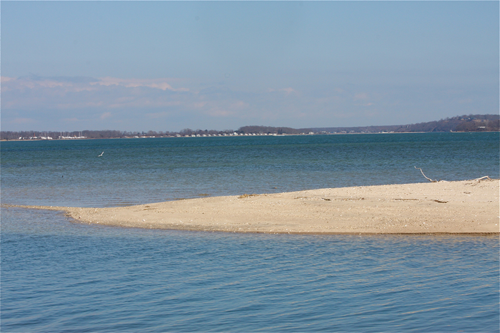Featured Letter: Treating waste water is a major issue

To the editor:
In his letter to the Suffolk Times last week, North Fork Environmental Council president Bill Toedter brought up significant points about nitrogen pollution and waste water treatment on the East End. I would like to add to the conversation.
There is no doubt that waste water treatment is a topic we should all be paying attention to. The quality of the water in the aquifer is affected by every land use. Everything that is water soluble, unless it breaks down into other by-products, makes its way into our creeks, Bay or Sound.
Recent material released by The Nature Conservancy depicts nitrogen loading to the Peconic Estuary. The three largest contributors of nitrogen to the estuary are septic systems/cesspools at 36 percent; atmospheric deposition, or natural nitrogen, at 27 percent and then agriculture at 19 percent. We can’t do much about atmospheric nitrogen, as nitrogen is an element. Agriculture’s contribution is to nitrogen loading is declining because the changing nature of farming. Less nitrogen is applied, or applied in a timelier manner, in a slow release formulation to maximize plant consumption. Fertilizer is an expensive input to a farm operation and farmers work closely with Cornell Cooperative Extension to minimize its use.
That leaves us with nitrogen from septic systems/cesspools as the single largest contributor of nitrogen to the Peconic Estuary.
Thanks to the commitment of County Executive Steve Bellone, a team from Suffolk County Department of Economic Development & Planning, the Department of Public Works and the Health Department recently went on a waste water best practices tour, visiting innovative alternative on-site residential waste water treatment leaders from several states, along with staff from the Nature Conservancy, Peconic Green Growth, Environmental Protection Agency, Stony Brook University and the New York State Environmental Facilities Corporation to learn about different technologies, financing and successful implementation strategies.
County Executive Bellone agrees with me that since sewering is not the answer on the East End, we need alternatives to the current use of cesspools and septic tanks, which basically mainline everything we put down the drain into the ground water.
County Executive Bellone announced earlier this year that Suffolk County should have demonstration projects in the ground this year to test these systems in our soil conditions and we should be permitting these systems within a year. This is a critical time to address our waste water infrastructure. The investments we make today will restore our water quality for current and future generations.
Suffolk County Legislator Al Krupski, Cutchogue








